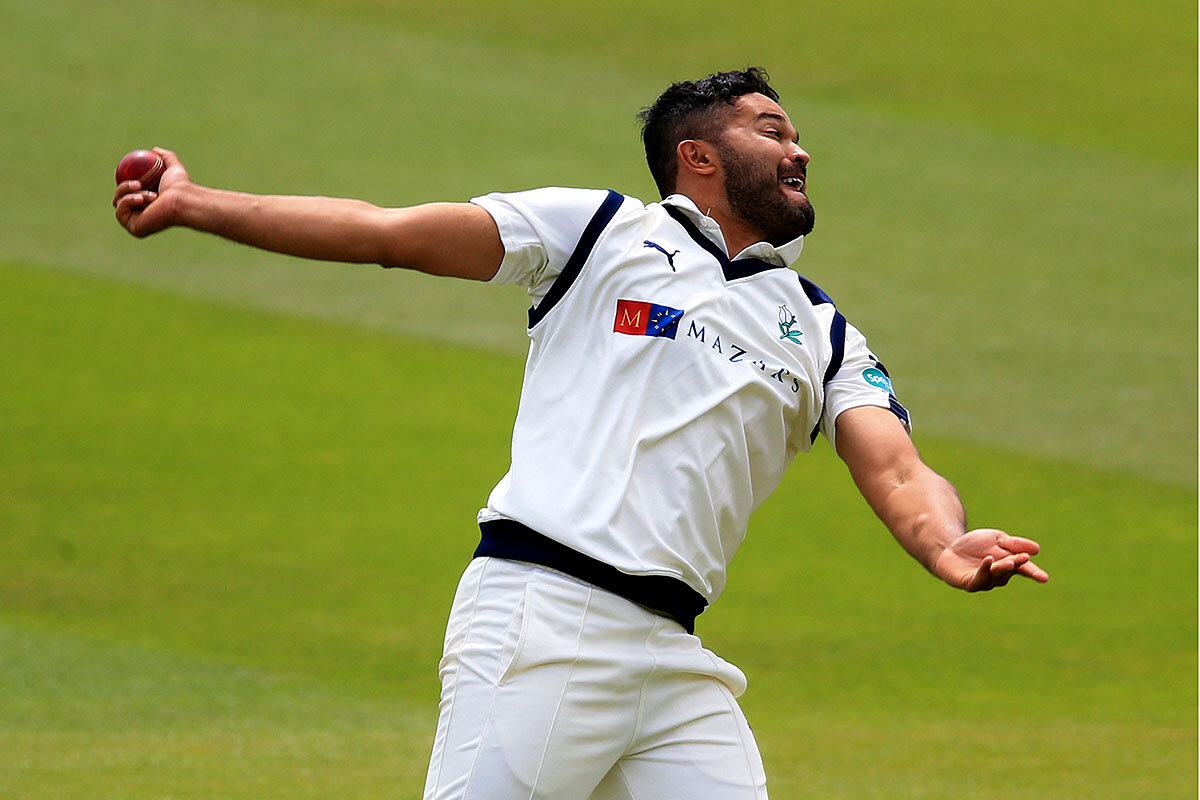As English cricket tackles racism, can soccer show the way?
Loading...
| London
Weekend after summer weekend, men in pristine white trousers are greeted by polite ripples of applause as they stride onto village greens the length and breadth of England, poised not so much to play a game as to reenact a centuries-old cultural rite.
Nurtured on county lawns – then exported during Britain’s imperial age to the Caribbean, Australia, and the Indian subcontinent – English cricket has long cultivated a genteel image, rooted above all in the idea of fair play.
But that image is suddenly taking a battering following a string of accusations of racism aimed at players of South Asian heritage – made even worse by revelations of how the complaints were initially ignored, and then played down, in the evident hope that they would simply go away.
Why We Wrote This
English cricket is suffering an identity crisis, its genteel values undermined by revelations of racism. Can soccer provide ideas on how to tackle it?
Now, far from going away, the controversy has escalated into a front-page scandal, drawing in not only top cricket players but also leading politicians, including Prime Minister Boris Johnson.
And that has prompted the cricketing authorities to take a series of high-profile steps to signal they’re intent on beginning to put things right.
The cricket establishment now finds itself looking to learn lessons from soccer’s aggressive zero-tolerance policy on racism. Britain’s other national sport struggled for years with ugly incidents of prejudice toward its Black players, while cricket watched serenely. But soccer authorities have worked to root out racism in locker rooms, in the stands, and online, and now cricket seems set to follow suit.
“Banter” or slur?
At the center of the cricket controversy is the most famous, and most successful, of England’s professional county clubs, Yorkshire, and a former standout player there named Azeem Rafiq, who first alerted the club’s management three years ago to the racist epithets and other forms of pressure or abuse that he and other players of Asian heritage were suffering.
At first, management did nothing. After he raised the issue during a BBC interview, it did set up an inquiry. But that probe ultimately played down the seriousness of the allegations, dismissing the frequent use of a racial slur referring to people of Pakistani heritage as a part of locker-room “banter.”
None of the individuals named by Mr. Rafiq were disciplined or dismissed.
And while the club did offer a financial settlement, that was conditional on a nondisclosure agreement, which he refused to sign.
Only a drumbeat of further revelations in British newspapers finally forced a reckoning last month.
The chairman of the club, who’d arrived after Mr. Rafiq had retired from playing, was the first to resign, saying he’d tried but failed to get the top executives to treat the issue with the seriousness it deserved, or to persuade the national cricketing authorities to intervene.
Now, Yorkshire is paying a price. The club’s main corporate sponsors have withdrawn their support, and the England and Wales Cricket Board has suspended the use of Yorkshire’s famous cricket ground, Headingley, for lucrative international matches.
Then Yorkshire named a new chairman, Kamlesh Patel. He is a senior member of the national Cricket Board, a leading voice on social and mental health affairs, and a member of the House of Lords. He is also of Asian descent.
Lord Patel promptly oversaw a top-to-bottom clear-out of the existing management and coaching staff. He also agreed to a financial settlement with Mr. Rafiq, without any nondisclosure clause, fully aware that Mr. Rafiq was about to testify to a parliamentary committee on his experiences of racism.
Far from unique
Mr. Rafiq’s testimony turned out to be explosive, and at times tearful, detailing an environment of intolerance and racism that went far beyond name-calling.
Lauded by Mr. Johnson for his bravery in speaking out, Mr. Rafiq recalled being forced to drink alcohol during his youth cricketing career, violating his beliefs as a practicing Muslim; enduring “deep-rooted” racism during his two spells at Yorkshire between 2008 and 2018 that left him feeling close to suicidal; and being treated in an “inhuman way” when his son was delivered stillborn in 2017.
Other English cricketers of Asian heritage echoed his account, and leading cricket writers and commentators said such behavior occurred in other county clubs as well.
Describing the parliamentary testimony as “spellbinding,” cricket journalist George Dobell urged people “not [to] think his experiences are unique. They are so far from it.”
Those running the game appear to have a newfound sense of urgency. The chief executive of the Cricket Board, Tom Harrison, used his own appearance before the parliamentary committee to denounce Yorkshire’s handling of the allegations, saying it “speaks to institutional racism” that not just Yorkshire but all the English clubs now had to confront uncompromisingly.
If cricket did not “fix” the problem Mr. Rafiq and others had highlighted, and “fix it fast,” he said the very “survival of our sport” was in peril.
Soccer to the rescue?
The nature of that “fix” may be influenced by English football, which has been mounting an open assault on racism toward its many Black players.
Off the back of America’s Black Lives Matter movement, England’s national soccer team chose to take the knee ahead of all its games in this year's European Championship tournament – a move endorsed by its manager and now observed weekly by all the professional teams in England’s domestic Premier League.
The soccer clubs have also partnered with an anti-racism body called Kick It Out in making a set of recommendations to strengthen online safety legislation and ensure that victims of racial and other abuse on social media are protected.
“There is a sense that soccer understands that it works as part of society and not within a vacuum,” says Simon Windsor, a radio commentator who witnessed “monkey chants” aimed at Black players during the 1970s and ’80s. Racism has not disappeared, he acknowledges, but “soccer, at least, forced doors of conversation open to allow for progress.”
Among moves under consideration in cricket are a range of steps paralleling soccer’s approach: clamping down on racist chants during games, an education program to improve dressing-room culture, and a partnership of its own with Kick It Out.
A recently launched “equity” hotline for those with discrimination complaints has already received more than 2,000 calls.
Lord Patel, along with Mr. Harrison and other national cricket figures, has been keen to stress that truly addressing the problem is going to take time.
But the new determination to tackle the issue is being seen at least as a start.
“I’m filled with hope, but that is at the expense of Rafiq and others in the British Asian community,” says Zulfiqar Ali, a Yorkshire cricket fan born a stone’s throw from the club’s ground.
“Cricket will have lost many fans, but with purpose and a will to change, they can be brought back.”







